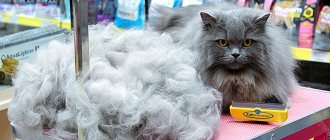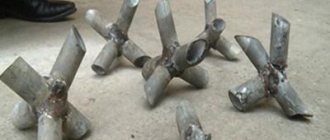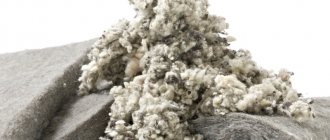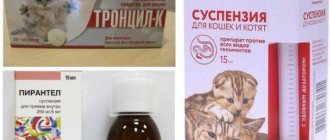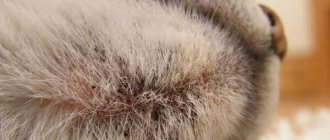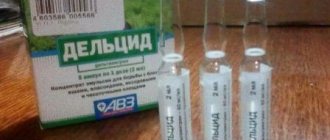Properties of dog hair
Improvement of the patient's condition in the treatment of certain inflammatory diseases and relief of pain in the joints occurs by increasing blood circulation in the area of the inflammatory process.
Dog hair works great in cases where dry heat is indicated. A dry compress will gently relax your back muscles that have become stiff from prolonged sitting.
Its positive effect was also felt by those who wore a bandage made of dog hair for gynecological inflammation. The secret is that in its structure it is similar to a hollow inside antenna made of tubes, thanks to which it does not get wet, like a sheep's, and perfectly accumulates and retains heat.
The raw material for making health-improving or simply warm clothes is pet hair, which is obtained by combing animals. Not all breeds of pets have a fleecy coat suitable for use for such purposes.
REFERENCE. The wool of the Chow Chow, Malamute, Collie, Bobtail, and Caucasian Shepherd has good qualities. It does not fall off and remains dry during use.
Yarn made from terrier wool is too stiff, and, on the contrary, yarn from poodle wool is too soft and moisture-absorbing.
We will tell you how to spin dog hair at home, manually or using special devices.
Wet felting
First, we take a piece of film with a margin of approximately 15 cm on each side of the expected belt size. This is necessary so that you can tuck the edges of the dog hair “layer cake” (this will create a smoother rectangular shape, and you will not need to cut off precious pieces of the felt mat).
Now we take the dog’s hair itself and begin to “ruffle” it. We will do this with our hands, but carefully. How to do it? Rinse and gut a small ball of dog hair until fine and fluffy.
With such scraps we lay out the entire first layer of the workpiece in one direction. We put our disheveled scraps so that they overlap one another. This way we avoid bald spots and voids in the rug.
The next step is to apply a second layer, but in the opposite direction. We do not allow omissions and do not forget about overlaps. So we lay at least 4 layers. If it is possible and there is a lot of raw material available, more layers are possible.
The felt will be denser and stronger. The result was a fluffy “layer cake” of scraps of dog hair stacked one on top of the other.
Now we need to thoroughly moisten all this with hot soapy water. Why hot? Hot water straightens the hairs, and the soap solution helps them adhere to each other into a dense mass.
Attention
This is the most crucial moment. Wetting from a spray bottle is not quick, but it is reliable. Pieces of wool will not move anywhere, voids or lumps will not form. But you need to take into account that dog hair doesn’t get wet well, so you can water it by hand, trying not to knock a single piece out of its place.
When everything is properly wet and the workpiece has become twice as thin as our fluffy original rug, you can pour a bolder soap solution. But not in a stream or stream. Its density and durability will depend on how well our entire future belt made of dog hair gets wet.
In our case, the mesh allowed soapy water to spill through the top. On the one hand, this is good and convenient, on the other hand, bubble wrap, although it prevents the wool from getting wet, makes it possible to felt the wool very tightly
You have to remove the top film and very carefully wet the unprotected mat
Tuck the edges of the bottom film inward (we had a rather stiff mesh, so there were problems with tucking). Now you can cover the wet and settled mat with a second film or mesh
Carefully but very tightly roll the resulting film pancake onto a rolling pin (it is most convenient for our purpose)
To prevent this whole structure from unwinding and falling apart during the process of felting wool, we will secure our “sausage” with a rope in a spiral or with hair elastic bands along the entire length. We will hit and roll this whole thing, so we need reliable fixation.
Since we are making a dog hair belt with our own hands, we cannot allow valuable raw materials to go to waste. We tie it tightly, without tightening it, so that the whole structure can be pounded without fear and, at the same time, without tearing the wet felt. We want to end up with a belt that is tight, durable and free of torn holes.
Well, now it’s time for the mechanical part of the work. We take a rolling pin with a workpiece wound around it and begin to squeeze it with our hands, roll it and tap it on all sides on the table or, as in our case, on a bed of wooden balls. If it’s not there, it doesn’t matter - on a flat surface, preferably wooden, it turns out no worse. So we roll and knock for 15-20 minutes.
Attention
We tap on all sides more than we roll. This way there is less risk of deforming the workpiece.
Then we carefully unwind and see what we got. If bald spots appear or something has moved, we fix it. Place scraps of wool on the voids and moisten them generously with more soapy water.
We wrap the bottom film together with the edges of the wet workpiece to make a product of the correct shape, again lay the film on top and roll everything back onto the rolling pin. We knead, tap and roll for another 20 minutes, or even half an hour.
The density of the felt, and, consequently, the quality of the future dog hair belt, which we are now making with our own hands, will depend on how long and how diligently you subject the workpiece to mechanical stress.
Now you can rinse the “sausage” under running water. We do this without unwinding or unfolding the workpiece.
Next, you need to untie everything, lay out the resulting felt mat on a flat surface, remove the top film and wash it again with soapy water.
If you did everything as it should, the resulting thick felt mat can even be carefully rinsed
How to prepare wool for spinning
To obtain raw materials, you need to brush your dog regularly. Shorthaired and Wirehaired
pets are combed once every two weeks, long-haired ones - once a week.
Wool collection
We collect the combed material into separate bags, or preferably into boxes. You can use raw materials obtained from dog grooming.
IMPORTANT! The length of the cut wool should be no shorter than 2–3 cm.
Cleaning and washing
Before spinning, it is necessary to sort out the fibers from debris, comb them, wash them, and then dry them.
It is easier to spin wool that has not been washed. But this option is not suitable for everyone due to the specific smell and depends on the degree of contamination of the raw materials. To get rid of a specific smell, it is advisable to soak the wool for 2-3 days in warm water, changing the water several times.
Washing is done in regular mesh laundry bags. If you don't have it, you can use curtain fabric or used polyamide tights.
If the animal lives in the yard, washing is done in several waters. The first water should be hot to wash away grease and stuck dirt and sand. To do this, use any wool washing product: Laska, Vorsinka or shampoo. Then rinse well.
After washing, the wool is treated with an antistatic agent so that it does not become electrified during operation. This procedure also improves the smell of raw materials.
Combing
After this, the raw materials are combed using special brushes or carders . For small volumes, you can easily handle it with two regular dog brushes.
To do this, put a clump of wool on one brush and comb it with another brush. And so on several times. The result is individual combed tows. The procedure allows you to achieve uniformity of the material in color and density. This makes it possible to subsequently obtain a thread that is uniform in thickness and color.
IMPORTANT! For this procedure it is better to use brushes with long needles. This will speed up the process of preparing raw materials.
Preparatory work
Before you start making yarn, you need to do some preparatory work. To do this we will need to perform several steps.
- Find a source for obtaining material: your own dog or friends who have one and are ready to share.
- Collect the required amount of material.
- Clean it up.
- Prepare all the necessary tools and think through a plan.
If you have found a way to obtain it, you need to collect the yarn correctly. After each brushing of your dog, collect the hair from the brush. Mechanically remove coarse hairs and dirt. Place the lump in a cloth bag or cardboard box.
IMPORTANT! It is better to avoid storing in plastic bags and ensure good air circulation in the bag.
After collection, it is necessary to properly wash the workpiece. To do this, place a soap solution in a basin or bowl. Immerse the product in it, gently press with your hand and let it soak . After this, draw clean water and get rid of the remaining soap until clean water begins to run out.
IMPORTANT! All actions should be performed carefully and without sharp twisting to avoid fiber ruptures.
Drying wool
Drying is the final stage of preparation. There is no need to artificially create conditions to speed up the process.
Spinning Basics
Spinning is performed with or without a warp.
It is good to use wool, half-wool, or acrylic thread as a base. Products made from yarn with such a base are elastic and retain their shape well.
If you don't have it, you can use a stronger viscose or regular cotton thread (for example, No. 10) of a suitable color.
Dog hair is slippery, so to prevent it from stretching, it is better to spin it onto a warp.
Mastering this skill in absentia is so easy. But with enough patience and skill it is quite possible. If you have spun unwashed wool, thread from a spindle or spool, you need to rewind it into a spool, tie it in two places (preferably with a visible colored thread) and wash it.
Methods for hand spinning dog hair
No tool
Small volumes of raw materials can be spun without special tools.
To do this, the prepared tow is held in the left hand. And with the right hand, they pull out as even a thin strand as possible from it and twist it. Twisting is performed always in one direction.
The end of the strand should be tied to the bottom of a stick 30–40 cm long. The bottom of the stick should be weighted with something.
When one tow ends, a strand is pulled out from the next tow in the same way. Bring it overlapping onto the not completely twisted end of the previous thread and twist it tightly.
Thus, each time the threads from individual tows are connected.
With tool
A spindle is used as a tool. Let's consider spinning with a warp.
We strengthen the bobbin with the warp thread on a nail or some kind of pin fixed to the table. Next, you need to pull the thread and pass it through an object located above (for example, a table lamp, cornice). The thread should be fed from the top.
After pulling the thread, you need to tie it around the heavy lower part of the spindle. Then twist 2 times clockwise around the spindle and tie with a creeping loop. The process consists of turning the spindle clockwise by the thin end while hanging, slightly releasing it from the fingers. Practice, you need skill!
Next, take a tow of wool with your left hand and apply it to the thread in front of the spindle. Constantly pulling the strand, move the left hand with the tow up along the thread, rotating the spindle in one direction with the right hand. When your arms reach their limit, you need to remove the loop from the spindle, place it on your thigh and wind the resulting thread of yarn. Then the process is repeated.
To prevent the knitted product from being asymmetrically elongated, twisting is done after spinning. It consists of joining two threads obtained as a result of spinning.
IMPORTANT! Twisting of two threads is performed in the direction opposite to spinning. If spinning was done clockwise, then the threads should be connected counterclockwise.
What you will need - available materials
The easiest way is to spin by hand using a spinning wheel and spindle. To work, you need to prepare some tools and materials.
spinning wheel
A hand spinning wheel is a wooden device for making thread. There are two types of tools:
- a composite product that has vertical and horizontal parts;
- a single spinning wheel was made from the trunk or root of a tree.
Regardless of the type of hand spinning wheel, in the end it has an unchanged design. The horizontal lower segment is used for spinning. This place is called “the bottom”. The vertical part of the working tool includes 2 elements: shovels or paddles, necks or legs. The craftswomen had to work on this type of spinning wheel for quite a long time to obtain the required amount of thread.
Spindle
A spindle is a product made from a cut tree. Usually the instrument is made of birch. However, you can use other wood, which is cheaper. The spindle manufacturing process consists of several stages:
- the cut tree needs to be sawed crosswise, after which bars of different sizes must be cut along the trunk, taking into account the size of the spindle that needs to be created;
- the bars must be dried in an oven for 24 hours;
- the edges of the product are rounded after drying, using a sharp knife for this purpose;
- using a machine, they give the product its final appearance.
Machines are also made independently from wood. The production of such products is considered the cheapest, for this reason the spindle has become an affordable working material for most peasant families.
Wool
Tow (the second name for wool) must first be prepared for the spinning process. The material is sorted out, debris is removed and combing begins. For this purpose, special combs are used. The procedure looks like this: put a little wool on one comb and comb it with the other. The manipulation must be carried out until the tow ends up on the same comb.
How to choose
When you plan to get yarn, you need to properly collect and then sort the wool. Fold the softest one separately, separate the coarser one. It should be stored in boxes or paper bags or fabric bags. In a plastic container, wool stops breathing, which is why it quickly cakes. It is allowed to store the product in any room, as long as it is not exposed to sunlight.
It is better to spin combed wool. It cannot be saved for years. Be sure to put anti-moth products in the container. It is recommended to sort the material by color so that the yarn is uniform. To ensure an even color before spinning, all yarn must be combed several times or sorted to obtain a smooth tone transition - from the lightest to the darkest shade of color.
The presence and amount of awn in the undercoat affects the softness of the final yarn.
The awning must only be selected manually. Neither drums nor carder brushes will remove it completely - this is the most labor-intensive and time-consuming process. To get fluffy and soft yarn from merino wool, and even a thin one, you will have to scrupulously select all the spine from the fluff. Because of this, we recommend immediately organizing the process of sorting and removing the spine.
Mechanical spinning
On a mechanical spinning wheel
Operation on simple mechanical spinning wheels of different types is similar. For 2 coils available as standard
set of spinning wheels, spinning is performed, and on the third - weaving.
Getting started is by attaching the reel to the spinning wheel. Then a warp thread is tied to the spool, threaded and brought out from top to bottom in front of the spinner’s hands.
The further process is similar to hand spinning in terms of winding wool onto the warp thread. The process of winding thread onto a spool is mechanized. The reel is driven by a pedal. It sets the wheel in motion, from which the reel rotates. 2 spools of yarn are spun, from which one thread is then twisted, ready for knitting.
REFERENCE . Yarn made on a simple spinning wheel is softer, more elastic and pleasant than on an electric one.
Making a belt
The most difficult stage is completed, now all that remains is to give the desired shape, sew the wool to the fabric and
attach special holding devices.
At this stage, you can be guided by your own wishes and preferences. We will only tell you the general plan for constructing a pattern and sewing.
What you need for work
The first step is to decide on the choice of material on which everything will be attached, and the necessary tools.
- Felted wool, prepared earlier.
- Knitted fabric or any material you like.
- Wide elastic band for the belt and two elastic bands for fastening.
- Velcro, fastener or button for fastening.
- Threads, needles, scissors.
- Tape measure.
In addition, you will need to take measurements and prepare a pattern. Comfort to wear largely depends on this.
Pattern
To sew a quality item, you need to prepare the pattern correctly. To do this, it is enough to know your waist circumference. Based on this size, draw a blank on graph paper.
The widest part is in the lumbar region. It resembles a large circle or oval, gradually tapering at the edges. Two elastic bands should be sewn on the side over the fabric. The optimal width would be 5–7 cm; the length must be adjusted depending on the individual size of the person.
On an electric spinning wheel
Electric spinning wheels simplify and speed up the spinning process the most. With them
In use, it is possible to set different speed and quality modes for thread twisting.
Working on such devices allows you not to be distracted by winding, since it is performed automatically. As a result of this, the spinner has the ability to wind the thread onto the warp with both hands at once.
What is a cross body bag?
How to clean faux suede boots
Adaptations
As before, only a spindle and a spindle (weight for a spinning wheel) are used for this task. At the same time, the whorl can be simplified. To make the process more convenient, it is worth making a special pendant for tow (combed fluff). This can be a simple board tied to a chair so that the tow attached to it is at face level.
In the early stages of training, it is unlikely that you will be able to immediately control both the uniform pulling of fluff from the tow and the unwinding of the yarn. It is better to prepare a shallow enamel cup in which you can place the spinning wheel for rotation.
